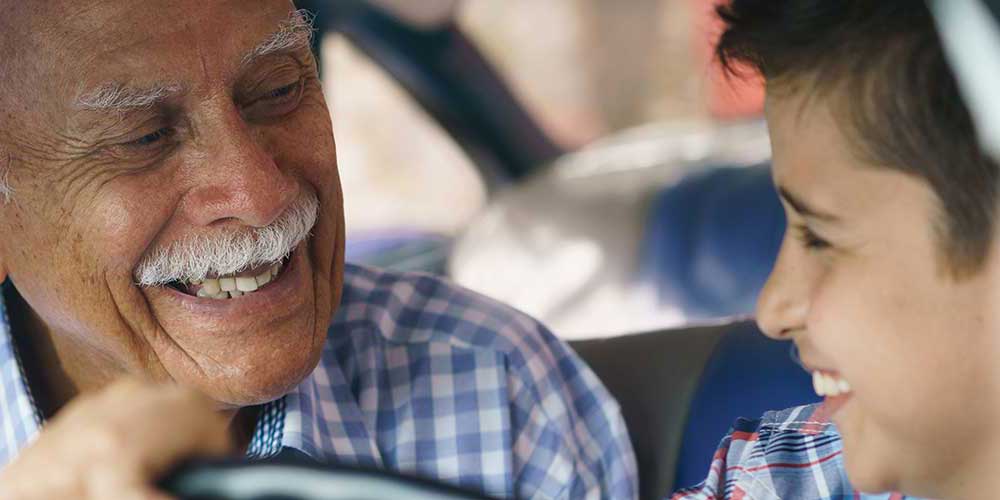By Robert Tate, Automotive Historian and Researcher
Images courtesy of Chrysler Corporation Archives/Motor Trend magazine
Published 5.20.2020
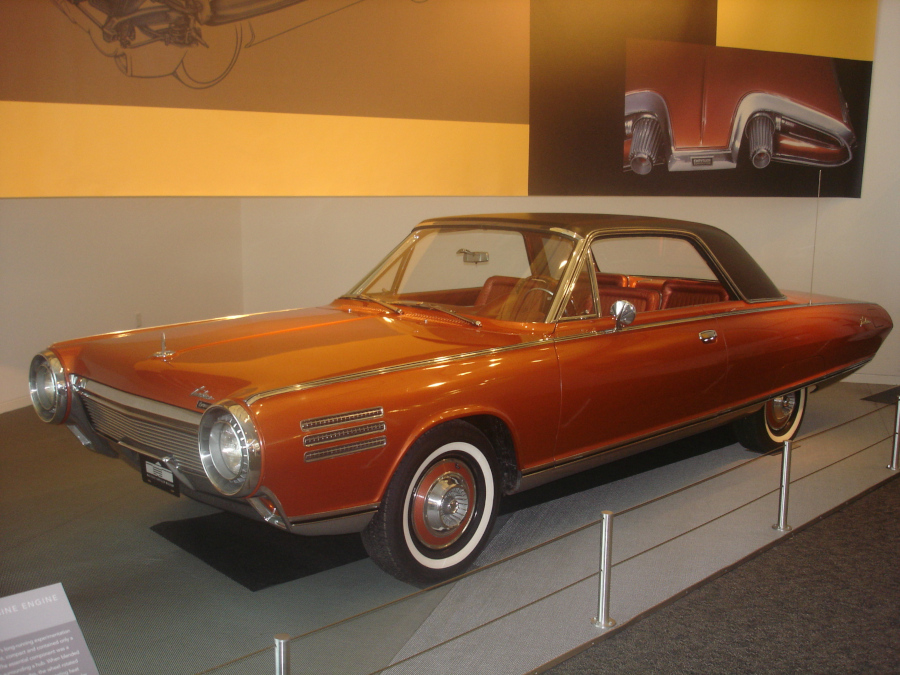 Chrysler Turbine Car on display at the former Walter Chrysler Museum
Chrysler Turbine Car on display at the former Walter Chrysler Museum
At the end of World War II, Chrysler Corporation’s research and development team had started working on a gas turbine engineering project. In the fall of 1945, Chrysler was awarded a contract by the Bureau of Aeronautics of the U.S. Navy to create a turboprop aircraft engine. Unfortunately, the contract would later be terminated in 1949. At that time, Chrysler research scientist team and engineers then returned to their original objective, which was developing an automotive gas turbine engine.
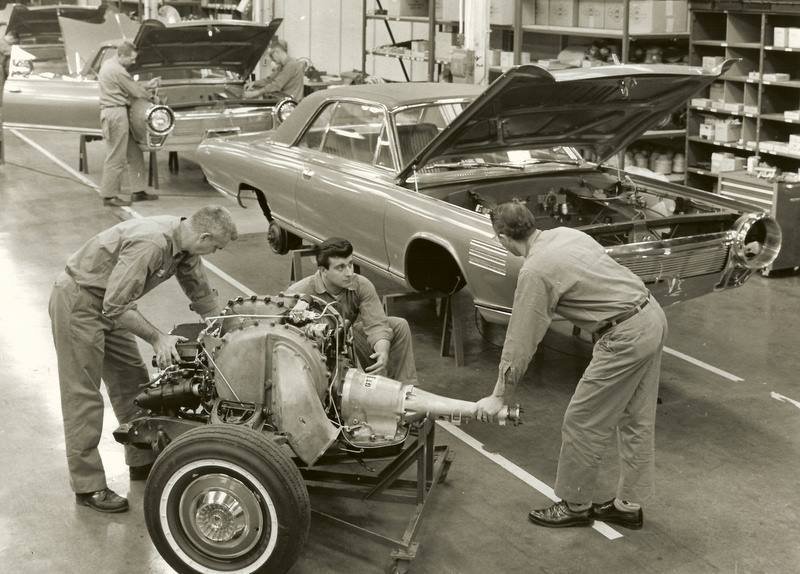 Chrysler Turbine on the assembly line (Chrysler Archives)
Chrysler Turbine on the assembly line (Chrysler Archives)
In the early 1950s, experimental gas turbine power plants were operating on dynamometers and in test vehicles. On March 25, 1954, Chrysler made history by producing the first vehicle powered by a gas turbine engine, a 1954 Plymouth sport coupe. Later, Chrysler would produce more gas turbine vehicles.
This story is about the popular 1963 Chrysler Turbine model that many still remember today. The limited-production 1963 Turbine car was a completely new design and offered in one body style only, a four passenger, two-door hardtop. The exterior and interior color was called Turbine Bronze. The model offered power steering, power brakes, power windows and an automatic transmission.
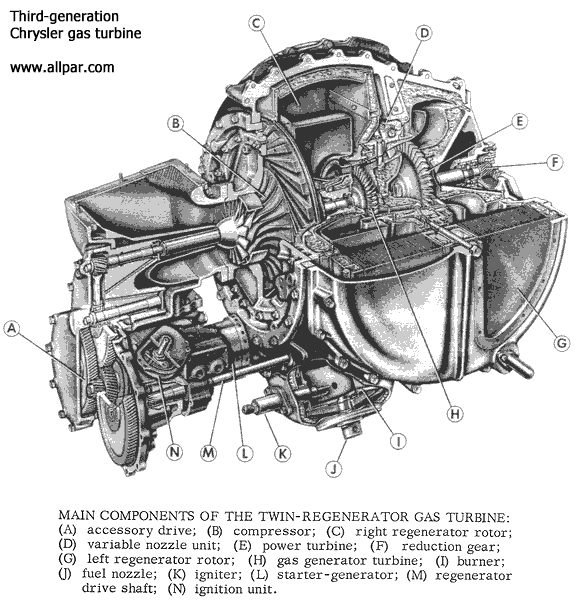 Drawing of the Chrysler Turbine engine (Chrysler Archives)
Drawing of the Chrysler Turbine engine (Chrysler Archives)
The Chrysler Turbine cars were built at a rate of one per week until the last of the 50 cars were finished in October 1964. The turbine engines were built and tested at Chrysler’s Research Laboratories. The objective of the Chrysler Turbine program was to test consumer and market reaction to turbine power and to obtain service data and driver experience with the Turbine cars under a wide variety of conditions.
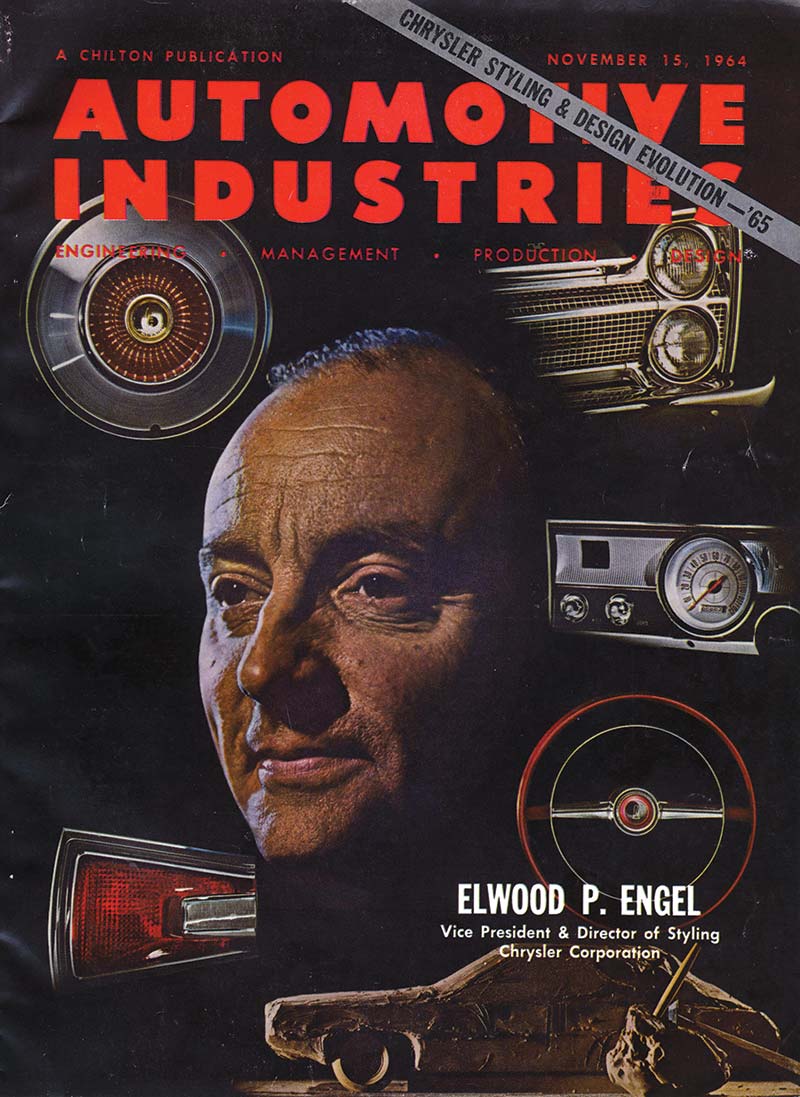 Automotive Industries magazine cover featuring Elwood Engel
Automotive Industries magazine cover featuring Elwood Engel
The designing and building of the 1963 Chrysler Turbine model was under the direction of Elwood Engel, who replaced Virgil Exner as director of styling in 1961. Engel was very involved with the Chrysler Turbine project. He previously worked at Ford and brought much of their styling influence to his new position. For many years, automotive enthusiasts and historians have said that the 1963 Chrysler Turbine design was influenced by Ford styling.
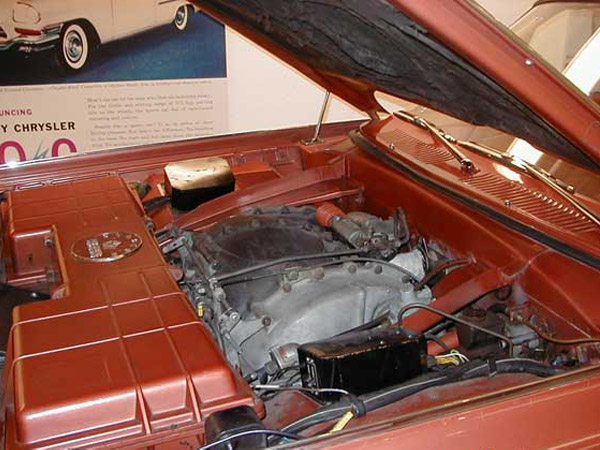 Chrysler Turbine car with hood open (Chrysler Archives)
Chrysler Turbine car with hood open (Chrysler Archives)
The Chrysler Turbine offered many great interior features. For example, the circular steering wheel was constructed with copper-toned plastic and had a full metal horn ring with the words “Chrysler Corporation” around the perimeter of the hub. The console controls were within easy reach of the driver’s right hand. The front seats were equipped with copper-colored safety belts with concealed floor attachments. The interior was designed to accommodate four passengers comfortably, with individual bucket seats.
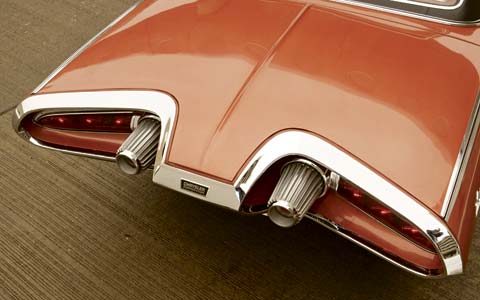 1963 Chrysler Turbine Car tail lights (Motor Trend)
1963 Chrysler Turbine Car tail lights (Motor Trend)
Regarding the exterior, the Turbine model also featured a low, thin roof silhouette which was supported by a narrow front pillar and wide rear pillar. The word “Turbine” in bright-metal script appeared on both rear quarters and a gold Pentastar was carried on the right front fender behind the wheel opening. Another distinctive feature that made the Chrysler Turbine stand was the rear end design, which I always thought was great looking. Some automotive historians called it an aerodynamic styling look. The rear deck was flat and wide with those great-looking horizontal tears light design, which many consumers greatly appreciated.
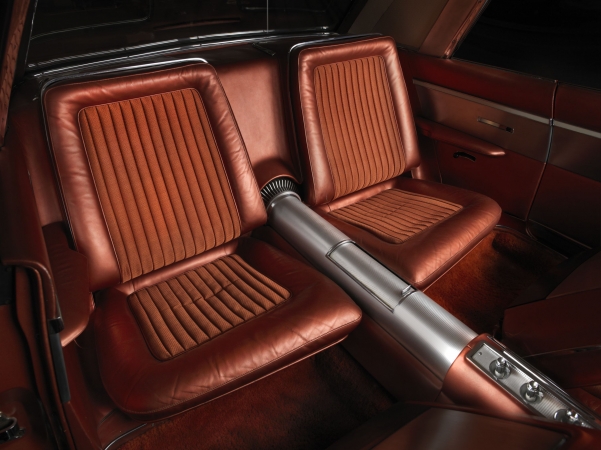 1963 Chrysler Turbine interior photo with rear seats (Chrysler Archives)
1963 Chrysler Turbine interior photo with rear seats (Chrysler Archives)
Chrysler Corporation operated a Turbine car consumer research program from October 29, 1963 to October 28, 1965, however, the last driver did not complete her three-month driving report until January 28, 1966. The fundamental qualifying requirements were that a consumer had to own a vehicle or be a member of a household that owned an automobile and could show a valid driver’s license. The candidates were selected by the accounting firm of Touche, Ross, Bailey and Smart.
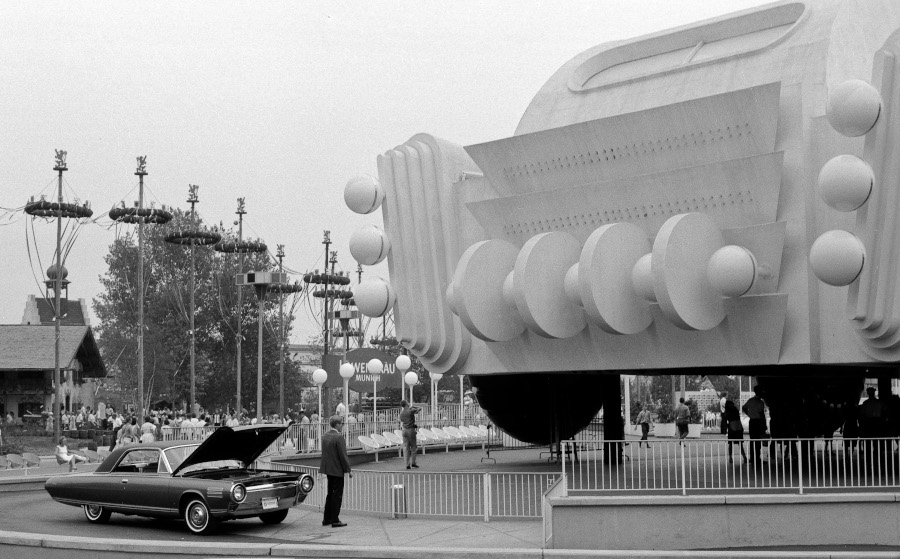 Chrysler Turbine Car at the 1964 Worlds Fair (Chrysler Archives)
Chrysler Turbine Car at the 1964 Worlds Fair (Chrysler Archives)
The world’s first consumer delivery of a Turbine car took place on October 29, 1963 in Chicago. Lynn A. Townsend, president of Chrysler Corporation, presented the keys of the Turbine car to Mr. and Mrs. Richard E. Viaha of Broadview, a suburb of Chicago. The drivers had to give feedback on their experience driving the 1963 Chrysler Turbine models. Chrysler also displayed the Turbine model across the United States in shopping center exhibits and at the New York World’s Fair. In total, the model was shown in 23 cities and in 21 countries. The Turbine car also drew crowds at several college campuses around the country as well.
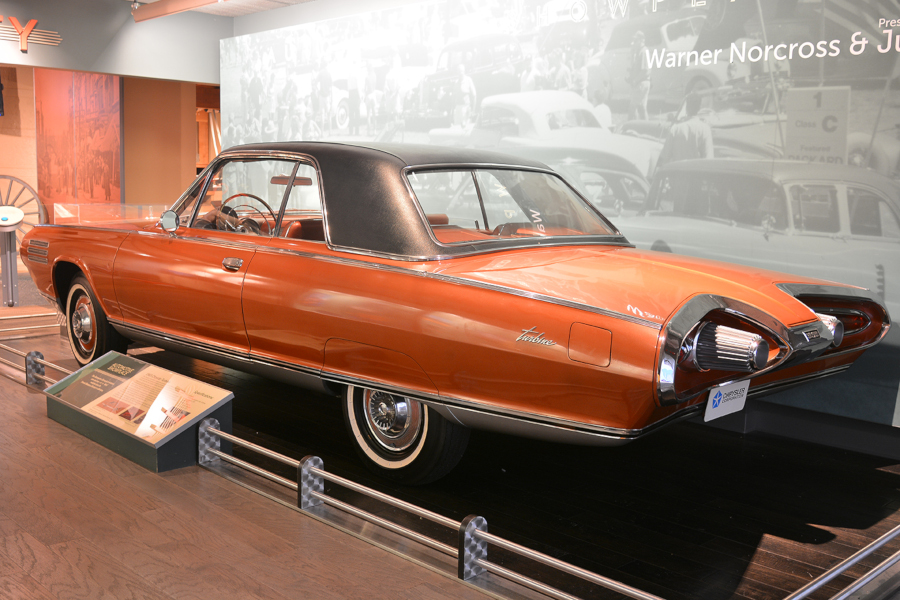 Chrysler Turbine on display at the Detroit Historical Museum, 2018 (Detroit Historical Society)
Chrysler Turbine on display at the Detroit Historical Museum, 2018 (Detroit Historical Society)
Unfortunately, Chrysler chose not to manufacture or widely release the car and continued researching the turbine engine, with only a few of these cars surviving today. One is in the collection of our partners at the Detroit Historical Society and was on display at the Detroit Historical Museum a couple years ago.
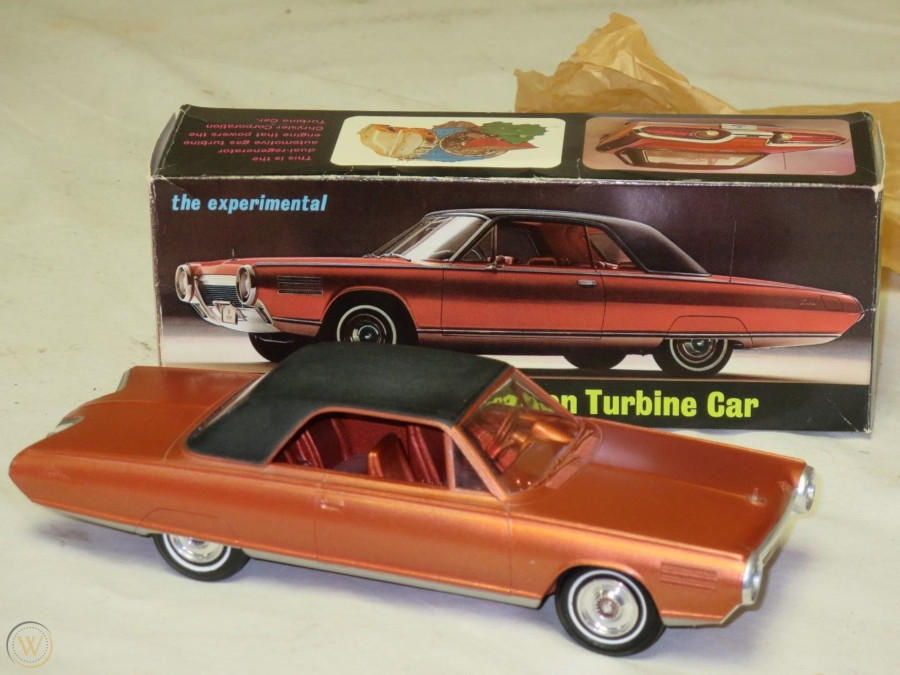 Scale model of Chrysler Turbine Car (Robert Tate Collection)
Scale model of Chrysler Turbine Car (Robert Tate Collection)
I once interviewed the late John Henle, the owner and president of Jo Han models in Detroit, who said that the “Chrysler Turbine was the plastic model car that outsold any other model that I had manufactured during the history of Jo Han Models.”
In conclusion, the 1963 Chrysler Turbine had an interesting history.
Bibliography
Chrysler Corporation. “History of Chrysler Corporation Gas Turbine Vehicles.” Engineering Office, 1964.


